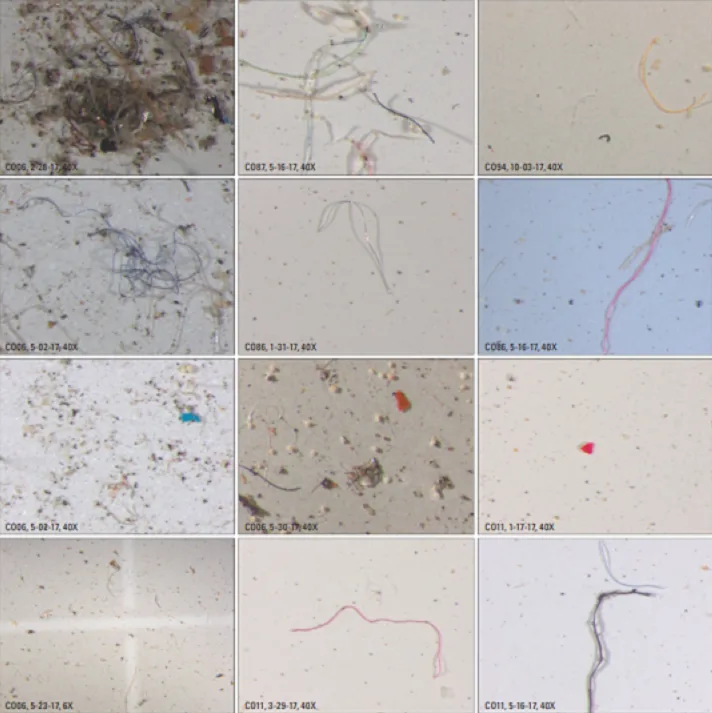
'It is raining plastic': Scientists find microplastic in rain in Rocky Mountains
A recent rainfall survey conducted by scientists at the US Department of the Interior and US Geological Survey concludes that 'it is raining plastic' after microplastics were found in over 90 per cent of the samples in the study.
Most of the microplastics found were in fibre form and came in a variety of colours. The study says that blue was the most common type followed by red, silver, purple, green, and yellow. Viewing the samples under a microscope also revealed that the rain contained plastic particles that were in the shape of beads and shards.

Magnified images of the microplastics that were suspended in the rain. Source: USGS
The study did not state where the plastic originated from. Atmospheric circulation patterns are capable of transporting microplastics significant distances and they have been recorded in some of the most remote parts of the oceans and the Arctic.
Scientists say that the impacts that microplastics have on human health are not fully understood, however several institutions are conducting research on this topic.
A study from the World Wildlife Fund (WWF) found that on average people swallow approximately 5 grams of plastic every week, which is about the weight of a credit card. This study found that the largest source of plastic ingestion comes from drinking water, which includes both bottled and tap water sources.









